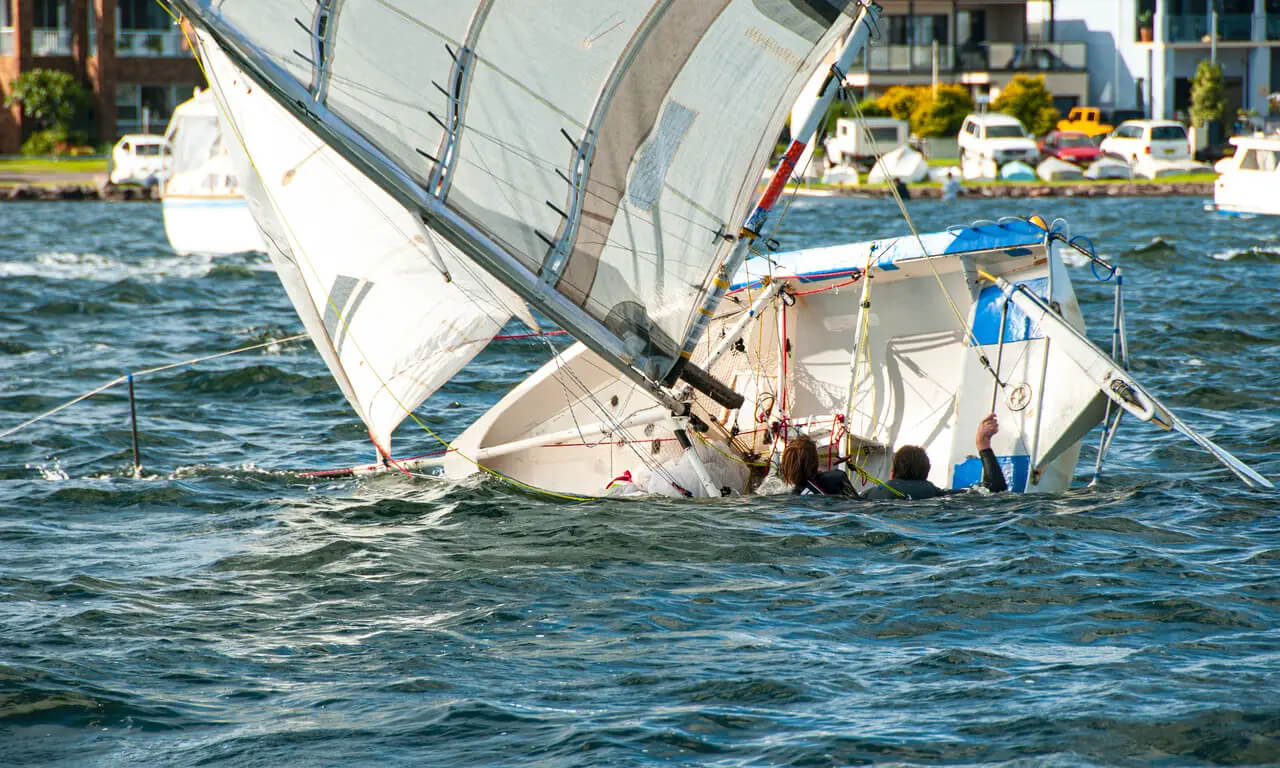
How to Avoid Capsizing Your Boat
Every year, Canadian boaters lose their lives when their boats capsize. Even if you are wearing a life jacket, finding yourself suddenly in the water with nowhere to go can be scary.
Remember, you are responsible for keeping the passengers on your boat safe at all times. Before heading out on the water, learn how to prevent capsizing and what to do if your boat does flip over.
What is capsizing?
Capsizing is when a boat flips over, either on its side or completely upside down. Smaller boats such as canoes and sailboats are a greater risk of capsizing than larger vessels. Fortunately, small boats also usually remain buoyant, so people in the water have something to grab onto while they wait to be rescued.
Common causes of boat capsizing
Unpowered boats like canoes and sailboats are the most likely to capsize. Common causes of boat capsizing include:
- Being surprised by a wave
- Turning suddenly, without slowing down
- Overloading the boat, either with too many people or excessive weight
- Distributing weight unevenly in the boat
- Adverse weather conditions like high winds and rough water
- Leaks
Boating under the influence of drugs or alcohol, which is illegal in Canada, can also be a factor.
How to prevent capsizing
- Make sure your boat is tied securely to the dock before boarding. Step onto the centerline of the boat, aligning yourself fore and aft. With one hand on the pier and the other on the boat, lower yourself into the center.
- Avoid tying the anchor’s line to the stern of your boat, as this adds more weight to the rear and can lead to capsizing. Instead, tie the anchor line to the bow.
- Avoid trying to carry items onto the boat. Instead, board the boat first and load items one at a time, placing them along the centerline. Pay attention to and follow the capacity plate information so you do not overload your boat.
- Maintain a low center of gravity: avoid standing up or moving around while the boat is underway. This is especially important in smaller and less stable boats. If you have to move around, keep low and stay centered, and always maintain three points of contact.
- Navigate corners at a safe speed and angle. As a general rule of thumb, you should slow down when turning.
- Look out for waves and the wakes of other boats and approach them head-on from the bow.
- If you find yourself boating in rough waters or bad weather, be sure to reduce your speed. Better yet, avoid going out on the water if there is a risk of high winds or a storm.
What to do if your boat capsizes
If possible, upright the boat and bail out the water. Once most of the water is removed, climb back into the boat. Alternatively, if near the shore, climb into the boat and paddle to safety.
If you can’t upright your boat
First things first: if your boat capsizes, do a head count and verify that everyone is wearing a life jacket. While wearing a PFD is not a legal obligation when boating on Canadian waters, it is a wise safety precaution that could save your life.
If your life jackets (PFDs) have drifted away, use any available objects like ice chests or empty soda bottles to stay afloat until you can reach the boat. Conserve energy while signaling for help using visual distress signals, a horn, mirror, shouting, waving, etc.
Stay close to the boat. If your boat is still floating, this is safer than trying to swim ashore. A capsized boat is easier for rescuers to see than a lone individual in the water, and the capsized boat will give you something to hold on to, to prevent you from drowning while you wait for help.
Be prepared to take appropriate measures if your boat capsizes in cold Canadian waters (under 18 degrees Celsius). Before heading out, learn what to do in case of cold water shock. If you think capsizing or falling overboard may be likely (depending on your level of expertise and boating activity) wearing a wetsuit might also be a good idea. Once in the water, do whatever is necessary to stay warm.
Learn more and get licensed at Canada’s National Boating Safety School!
Now you know the basics of how to avoid capsizing, and how to take appropriate action if your boat should flip over despite your best efforts to prevent it.
Curious to learn more about how boats float? You can read our article, or delve even deeper into boating knowledge by taking a safe boating exam online!
Get your Canadian boating license today!

